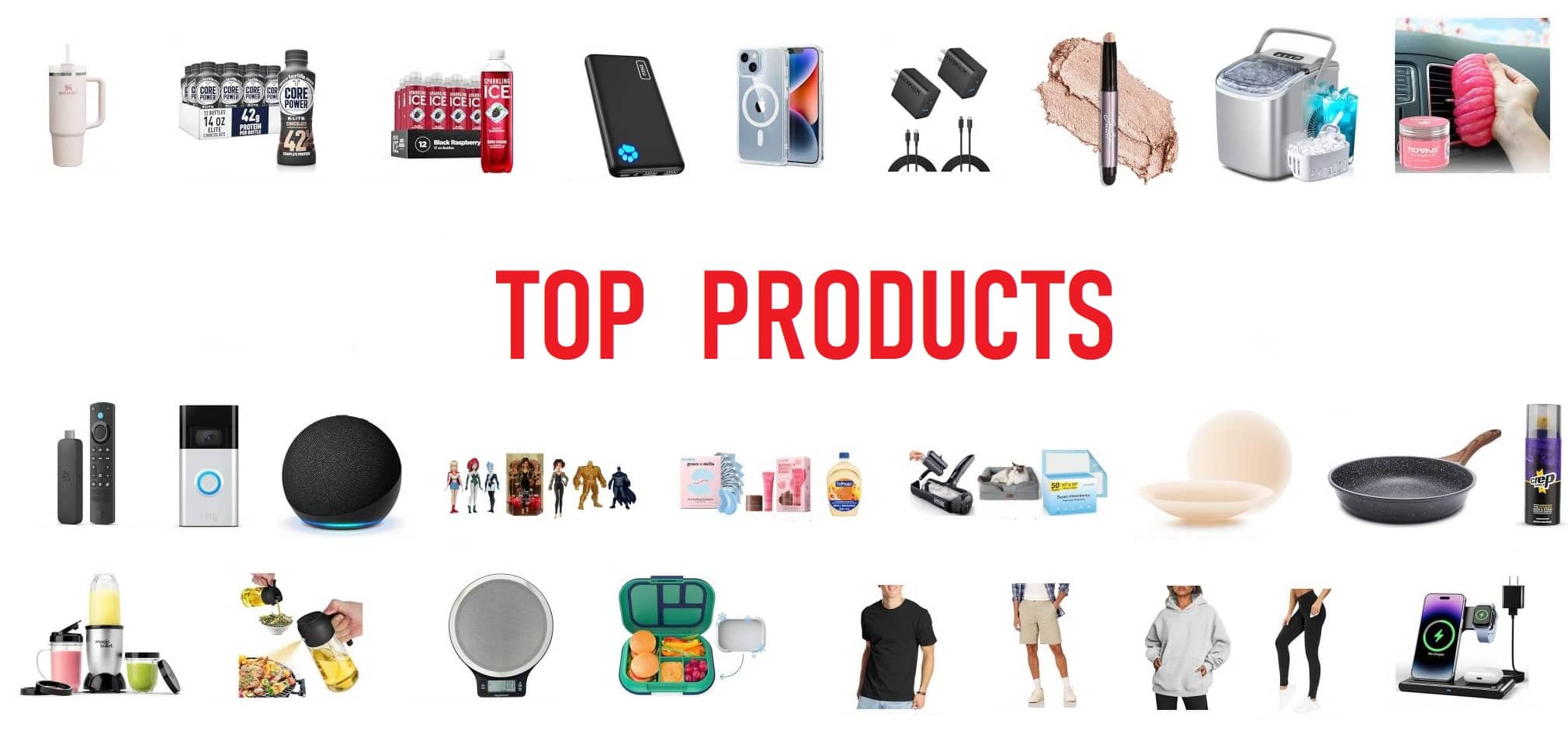Getting your products noticed on Amazon can feel like navigating a crowded marketplace. With the right marketing strategies, however, you can stand out from the competition and drive more sales. In this comprehensive guide, we’ll explore various Amazon marketing strategies that can help you optimize your campaigns, reach new customers, and grow your business.

How to Create a Successful Amazon PPC Campaign
Amazon Pay-Per-Click (PPC) advertising can be a powerful tool to increase visibility and drive sales. Here’s how to create a successful PPC campaign:
- Set Clear Objectives: Define what you want to achieve, whether it’s increasing sales, driving traffic, or boosting brand awareness.
- Choose the Right Campaign Type: Amazon offers different types of ads including Sponsored Products, Sponsored Brands, and Sponsored Display. Select the one that aligns with your goals.
- Keyword Research: Use tools like Helium 10 or Jungle Scout to find relevant keywords that potential customers are searching for.
- Create Compelling Ad Copy: Write engaging ad copy that highlights the key benefits of your product.
- Monitor and Optimize: Regularly review your campaign performance. Adjust bids, refine keywords, and update ad copy based on what’s working.
Example: If you’re selling a new gadget, target specific keywords related to its unique features and monitor which keywords drive the most conversions.
Mastering Amazon Sponsored Products for Increased Sales
Sponsored Products ads can help boost your product’s visibility in search results. To make the most of these ads:
- Target the Right Keywords: Choose keywords that are relevant to your product and have a good balance of search volume and competition.
- Optimize Your Bids: Set competitive bids to ensure your ads appear in prime locations.
- Use Automatic and Manual Targeting: Combine automatic targeting for broad reach with manual targeting for more precise control.
- Regularly Review Performance: Analyze metrics like click-through rate (CTR) and conversion rate to refine your targeting and bidding strategies.
Example: A well-targeted Sponsored Product ad for a new kitchen gadget could appear at the top of search results for relevant keywords, driving more traffic and sales.
How to Use Amazon DSP for Product Advertising
Amazon Demand-Side Platform (DSP) allows for programmatic ad buying across Amazon and other websites. To use Amazon DSP effectively:
- Define Your Audience: Use Amazon’s data to target specific customer segments based on their shopping behavior.
- Create Engaging Ad Creatives: Develop high-quality, visually appealing ads that resonate with your target audience.
- Leverage Retargeting: Use DSP to retarget customers who have previously interacted with your products or similar products.
- Analyze Performance: Monitor metrics such as reach, impressions, and conversions to gauge the effectiveness of your campaigns.
Example: You can target users who viewed similar products but didn’t purchase, offering them a discount on your product through a retargeting campaign.
Advanced Amazon Advertising Techniques for Sellers
To take your Amazon advertising to the next level, consider these advanced techniques:
- Use Product Targeting: Target ads to specific products or categories to capture customers already interested in similar items.
- Leverage Negative Keywords: Exclude irrelevant search terms to prevent wasted ad spend.
- Experiment with Ad Placements: Test different ad placements, such as top of search versus product detail pages, to see what works best.
- Utilize Bid+: Increase your chances of winning the top ad placement by using Amazon’s Bid+ feature.
Example: If your ad is showing up on the product detail page for competitors’ items, you may capture customers who are ready to make a purchase.
How to Set Up and Optimize Amazon Product Display Ads
Amazon Product Display Ads help you reach customers on Amazon’s platform and beyond:
- Select Your Audience: Target users based on their interests, shopping behaviors, and purchase history.
- Create Attention-Grabbing Ads: Use high-quality images and compelling ad copy.
- Optimize Ad Placement: Choose placements where your target audience is most likely to see your ads.
- Analyze and Adjust: Monitor performance and adjust targeting and bidding as needed to improve results.
Example: Product Display Ads can help you reach customers who have browsed similar products but haven’t yet made a purchase.
The Importance of Retargeting in Amazon Advertising
Retargeting is a crucial strategy for converting interested shoppers into buyers:
- Re-Engage Visitors: Target customers who have previously visited your product pages or added items to their cart but didn’t purchase.
- Personalize Your Ads: Show ads featuring the exact products or categories they interacted with.
- Use Dynamic Retargeting: Display ads that automatically update to feature products based on user behavior.
Example: If a shopper viewed your product but didn’t buy, retarget them with an ad offering a discount to encourage them to complete their purchase.
How to Run Seasonal Promotions on Amazon
Seasonal promotions can drive significant sales spikes. To run successful promotions:
- Plan Ahead: Prepare your promotional strategy well in advance of major holidays or shopping events.
- Create Eye-Catching Ads: Use seasonal themes and graphics to attract attention.
- Offer Special Discounts: Provide time-limited discounts or bundles to entice customers.
- Promote Across Channels: Use Amazon ads, social media, and email marketing to spread the word.
Example: Run a holiday sale with themed graphics and limited-time discounts to boost sales during peak shopping seasons.
Leveraging Amazon Lightning Deals for Product Exposure
Amazon Lightning Deals offer limited-time discounts and can drive significant traffic:
- Plan Your Deal: Schedule your Lightning Deals during high-traffic periods and ensure you have enough inventory.
- Create an Attractive Offer: Provide a compelling discount to capture customer interest.
- Monitor Performance: Track the performance of your deal to understand its impact on sales and visibility.
Example: Offering a Lightning Deal on a popular product during Prime Day can increase visibility and drive sales.
Best Practices for Amazon Influencer Marketing
Amazon Influencer Marketing allows you to leverage social media influencers to promote your products:
- Identify Relevant Influencers: Choose influencers whose audience aligns with your target market.
- Create Engaging Campaigns: Work with influencers to develop creative and authentic content that showcases your products.
- Track Results: Use tracking links and codes to measure the impact of influencer campaigns.
Example: Partnering with a fitness influencer to promote your new workout gear can help reach a targeted audience interested in fitness products.
How to Build an Amazon Email Marketing Strategy
Email marketing can be an effective tool for driving repeat business and engaging with customers:
- Build Your Email List: Collect emails through your Amazon store, website, and promotions.
- Create Engaging Content: Send newsletters, product updates, and personalized offers to your subscribers.
- Segment Your Audience: Tailor your messages based on customer behavior and preferences.
Example: Send a monthly newsletter with exclusive offers and updates to keep your customers engaged and encourage repeat purchases.
Using Social Media to Drive Traffic to Amazon Listings
Social media platforms can be powerful tools for driving traffic to your Amazon listings:
- Promote Your Listings: Share links to your Amazon product pages on social media channels.
- Engage with Your Audience: Post engaging content that encourages users to visit your Amazon store.
- Use Paid Social Ads: Invest in paid ads on platforms like Facebook and Instagram to target specific demographics.
Example: Share product reviews, tutorials, and promotions on your social media profiles to drive traffic to your Amazon listings.
Creating an Amazon Marketing Calendar for Product Launches
A marketing calendar helps you plan and execute your product launches effectively:
- Plan Key Dates: Schedule your product launches, promotions, and advertising campaigns.
- Coordinate Marketing Efforts: Align your Amazon ads, social media posts, and email marketing with your product launch schedule.
- Monitor and Adjust: Regularly review your calendar and adjust based on performance and market trends.
Example: Plan a coordinated launch strategy for a new product, including Amazon ads, social media campaigns, and email marketing.
How to Increase Amazon Sales with External Traffic
Driving external traffic to your Amazon listings can boost visibility and sales:
- Use SEO: Optimize your website and blog content to drive organic traffic to your Amazon listings.
- Leverage Paid Advertising: Invest in Google Ads or other external ad platforms to drive targeted traffic.
- Collaborate with Bloggers: Partner with bloggers to review and promote your products.
Example: Write blog posts about your products and include links to your Amazon listings, or use Google Ads to target customers searching for related products.
Amazon Content Marketing Strategies for 2024
Content marketing can enhance your Amazon presence and drive sales:
- Create Valuable Content: Develop blog posts, videos, and guides that provide value to your target audience.
- Optimize for SEO: Use relevant keywords to improve the visibility of your content.
- Promote Your Content: Share content across your website, social media, and email campaigns.
Example: Create a blog post about the benefits of your product and optimize it with relevant keywords to attract potential customers to your Amazon listings.
How to Use Amazon Live for Product Promotion
Amazon Live allows you to engage with customers in real-time:
- **Host Live Streams**: Demonstrate your products, answer questions, and interact with viewers.
- Promote Your Stream: Share details about your live stream on social media and through email.
- Use Interactive Features: Leverage Amazon Live’s interactive features to engage with your audience.
Example: Host a live stream showcasing how to use your product, answer viewer questions, and offer special discounts to viewers.
Leveraging Amazon’s Vine Program for Reviews
Amazon’s Vine Program provides honest reviews from trusted reviewers:
- Enroll Your Products: Submit your products to the Vine Program to get reviews from top reviewers.
- Encourage Reviews: Follow up with Vine reviewers and address any feedback.
- Leverage Reviews: Use positive reviews to build trust and credibility for your products.
Example: Participate in the Vine Program to get unbiased reviews that can help increase your product’s credibility and attract more buyers.
Building an Amazon Affiliate Marketing Strategy
Affiliate marketing can drive traffic and sales to your Amazon listings:
- Recruit Affiliates: Partner with bloggers, influencers, and website owners to promote your products.
- Provide Resources: Offer affiliates marketing materials, links, and banners to help them promote your products effectively.
- Track Performance: Monitor affiliate performance and adjust your strategy as needed.
Example: Work with a popular blogger to feature your products and drive sales through affiliate links.
How to Use Coupons and Discounts Effectively on Amazon
Coupons and discounts can attract customers and boost sales:
- Create Compelling Offers: Design coupons that offer meaningful savings to encourage purchases.
- Promote Your Coupons: Share coupon codes through your website, social media, and email marketing.
- Monitor Performance: Track the effectiveness of your coupons and adjust your strategy based on results.
Example: Offer a limited-time discount on your product to drive urgency and increase conversions.
Strategies for Running Effective Amazon Product Launches
A successful product launch requires careful planning and execution:
- Build Anticipation: Generate buzz before your launch through social media, email marketing, and ads.
- Coordinate Marketing Efforts: Align your Amazon ads, promotions, and external marketing efforts with your launch date.
- Monitor and Adjust: Track the performance of your launch and make adjustments as needed.
Example: Create a pre-launch campaign that includes teasers, exclusive previews, and countdowns to build excitement.
Understanding Amazon’s A9 Algorithm for Marketing Success
Amazon’s A9 algorithm determines product rankings based on various factors:
- Optimize Keywords: Use relevant keywords in your listings to improve search visibility.
- Enhance Product Listings: Ensure your product titles, descriptions, and images are optimized for both customers and the algorithm.
- Monitor Performance: Track your rankings and adjust your strategy based on changes in the algorithm.
Example: Improve your product listings by using high-converting keywords and optimizing your images to rank higher in Amazon search results.
By implementing these Amazon marketing strategies, you can enhance your product visibility, engage with your target audience, and drive more sales. Start applying these techniques today to see tangible results and take your Amazon business to new heights!
For more tips and updates on Amazon marketing, check out Amazon Seller Central and stay informed about the latest trends and strategies.







